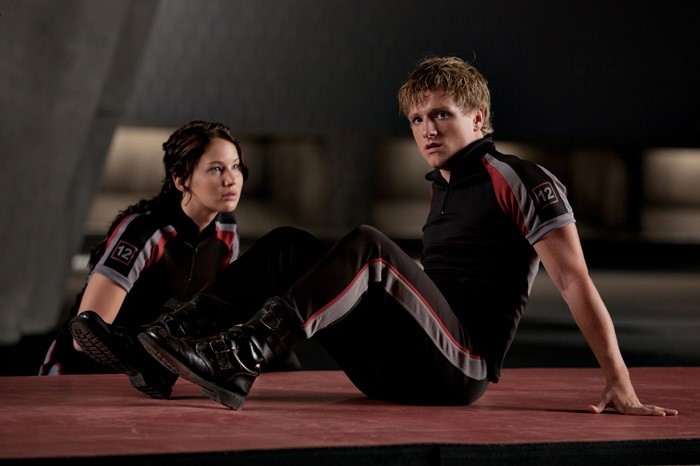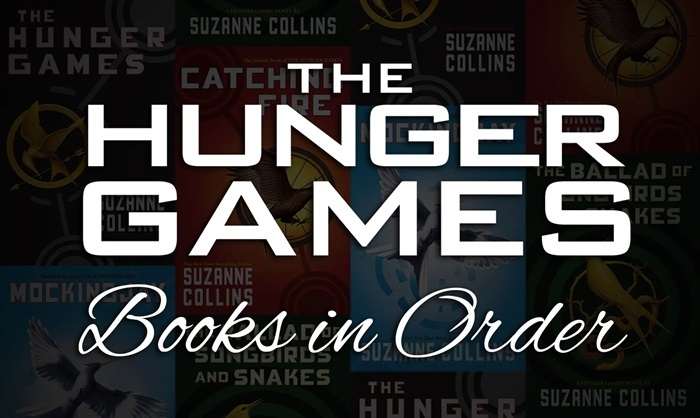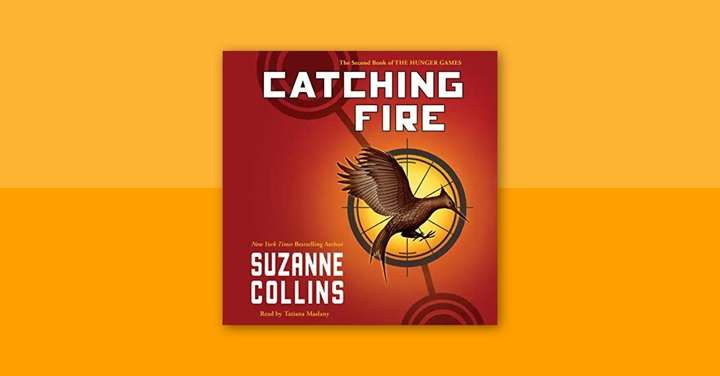Few film franchises have captured the hearts of audiences like The Hunger Games. Based on the best-selling novels by Suzanne Collins, this dystopian series explores the harsh realities of a futuristic world where survival is a matter of entertainment, and rebellion is fueled by the spark of hope. The films have left an indelible mark on pop culture, introducing us to unforgettable characters like Katniss Everdeen and Peeta Mellark.
In this article, we’ll take a deep dive into the Hunger Games movies in chronological order of their release, exploring the main themes, key moments, and impact on modern cinema. Whether you’re a die-hard fan looking to reminisce or someone just entering the arena, this guide will help you understand the Hunger Games saga in all its glory.
1. The Hunger Games (2012) – The Start of the Rebellion

Director: Gary Ross
Main Cast:
- Jennifer Lawrence as Katniss Everdeen
- Josh Hutcherson as Peeta Mellark
- Liam Hemsworth as Gale Hawthorne
- Woody Harrelson as Haymitch Abernathy
- Elizabeth Banks as Effie Trinket
Plot Overview
The first film in the series sets the stage for the entire saga. We are introduced to Panem, a dystopian society where the wealthy Capitol controls 12 districts. Each year, the Capitol selects a boy and a girl from each district to participate in the Hunger Games, a brutal televised fight to the death. Katniss Everdeen volunteers to take her sister Prim’s place, marking the beginning of her journey from a reluctant participant to a revolutionary symbol.
Katniss must use her survival skills to navigate the deadly arena, while also dealing with the emotional complexities of her relationships with Peeta and Gale. The Capitol’s control over the districts is portrayed in a chillingly authoritarian way, underscoring the themes of oppression and rebellion that permeate the series.
Key Themes and Impact
The first film focuses on survival, sacrifice, and the harsh realities of authoritarian rule. Katniss is a relatable protagonist, grounded in her love for her family, yet conflicted by the role she’s forced to play in a deadly game. The stark difference between the opulent Capitol and the impoverished districts highlights the division between the elite and the oppressed, a theme that becomes more pronounced as the series progresses.
Jennifer Lawrence’s portrayal of Katniss earned critical acclaim, cementing her as one of the most recognizable faces in Hollywood. The film’s box office success ($694 million globally) proved that dystopian YA fiction had a powerful place in modern cinema.
2. The Hunger Games: Catching Fire (2013) – The Revolution Ignites
Director: Francis Lawrence
Main Cast:
- Jennifer Lawrence as Katniss Everdeen
- Josh Hutcherson as Peeta Mellark
- Liam Hemsworth as Gale Hawthorne
- Sam Claflin as Finnick Odair
- Philip Seymour Hoffman as Plutarch Heavensbee
Plot Overview
In Catching Fire, Katniss and Peeta, now hailed as victors of the 74th Hunger Games, return home to District 12. However, their lives are far from peaceful. President Snow is keenly aware that Katniss’s defiance in the previous Games has sparked rebellion across the districts. To quell the uprising, the Capitol introduces the Quarter Quell, a special edition of the Hunger Games in which previous victors are forced to compete again.
As Katniss and Peeta re-enter the deadly arena, they find themselves surrounded by experienced killers, making survival even more challenging. However, alliances are formed, and it becomes clear that a larger plot is at play—a plot to overthrow the Capitol.
Key Themes and Impact
Catching Fire amplifies the series’ commentary on media manipulation, power, and the role of symbols in revolutions. Katniss becomes the “Mockingjay,” a symbol of rebellion, even if she’s not entirely comfortable with the role. This film deepens the complexities of her character, showing her internal struggles between survival and leadership.
Francis Lawrence took over as director, giving the film a darker, more intense tone. The sequel was a critical and commercial success, grossing over $865 million worldwide and solidifying The Hunger Games as a cultural phenomenon.
3. The Hunger Games: Mockingjay – Part 1 (2014) – The Revolution Grows
Director: Francis Lawrence
Main Cast:
- Jennifer Lawrence as Katniss Everdeen
- Josh Hutcherson as Peeta Mellark
- Liam Hemsworth as Gale Hawthorne
- Julianne Moore as President Alma Coin
- Donald Sutherland as President Snow
Plot Overview
Mockingjay – Part 1 shifts the focus away from the Hunger Games arena and into the brewing civil war. Katniss is now in District 13, the long-thought-destroyed district that has been quietly building a resistance against the Capitol. President Coin, the leader of District 13, sees Katniss as the face of the revolution, pushing her into the role of the Mockingjay.
Meanwhile, Peeta is held captive by the Capitol, and his mental state deteriorates as he is used as a pawn in the war. Katniss struggles with the trauma of the previous Games and the weight of leading a rebellion, even as she becomes a powerful propaganda tool for District 13.
Key Themes and Impact
This film deals heavily with the psychological toll of war and the manipulation of propaganda. Katniss grapples with her growing influence as the Mockingjay while questioning her true motivations and feelings for Peeta and Gale. The horrors of warfare are not glamorized, showcasing the devastation on both sides of the conflict.
The decision to split Mockingjay into two films was controversial, but it allowed for a deeper exploration of the characters and their motivations. Though some critics felt it was slow-paced, the film was still a box office hit, grossing over $755 million worldwide.
4. The Hunger Games: Mockingjay – Part 2 (2015) – The Final Battle
Director: Francis Lawrence
Main Cast:
- Jennifer Lawrence as Katniss Everdeen
- Josh Hutcherson as Peeta Mellark
- Liam Hemsworth as Gale Hawthorne
- Julianne Moore as President Alma Coin
- Donald Sutherland as President Snow
Plot Overview
The final chapter of The Hunger Games saga is an explosive conclusion to the revolution. Katniss, now fully embracing her role as the Mockingjay, leads a mission to assassinate President Snow and bring an end to the Capitol’s tyranny. However, as the battle for Panem intensifies, Katniss begins to question the true motives of those around her, particularly President Coin.
The war takes a heavy toll on Katniss, both physically and emotionally, as she witnesses the destruction of the districts and the Capitol alike. The lines between hero and villain blur, leading to a shocking climax where Katniss must make a fateful decision that will change the course of Panem’s future forever.
Key Themes and Impact
Mockingjay – Part 2 dives deep into the complexities of power, leadership, and the personal costs of rebellion. The theme of moral ambiguity is prominent, with Katniss grappling with the realization that not all rebels are good, and not all of the Capitol’s actions are as evil as they seem. The ending is both tragic and hopeful, a fitting conclusion to Katniss’s journey from a girl fighting for survival to a symbol of hope.
The film received mixed reviews, with some praising its fidelity to the source material and others criticizing its pacing. However, its box office success ($653 million worldwide) solidified its place in cinematic history.
Watching The Hunger Games Movies in Order: A Timeline of Rebellion

For those new to the series or long-time fans revisiting the films, here’s a chronological order of how the movies should be watched for the best storytelling experience:
- The Hunger Games (2012) – Where it all begins.
- The Hunger Games: Catching Fire (2013) – The spark that ignites rebellion.
- The Hunger Games: Mockingjay – Part 1 (2014) – The war for freedom begins.
- The Hunger Games: Mockingjay – Part 2 (2015) – The battle for Panem’s future.
The Hunger Games Legacy: A Cultural Phenomenon
The impact of The Hunger Games series goes beyond the box office. It inspired a generation to think critically about power, government control, and the role of media in shaping perceptions. Katniss Everdeen became a symbol of strength, resilience, and defiance, resonating with audiences around the world.
The franchise also paved the way for other successful YA dystopian adaptations, though few have reached the cultural heights of The Hunger Games. Jennifer Lawrence’s portrayal of Katniss remains iconic, and the series continues to be a touchstone for discussions on rebellion, war, and the human spirit.
Related Post:
Popular Google Doodle Games: A Fun and Nostalgic Journey
Mastering the Art of Slice: A Comprehensive Guide to Cool Math Games
Tampa Bay Rays Games: A Complete Guide for Fans
The Hunger Games movies are more than just a thrilling action-packed adventure—they are a reflection of society’s complexities, exploring themes of power, survival, and rebellion. Watching the series in order provides a cohesive narrative that takes you from the oppression of District 12 to the heart of a revolution. Whether you’re revisiting the series or watching it for the first time, the Hunger Games movies will leave a lasting impression on your mind, just as they have done for millions around the world.


